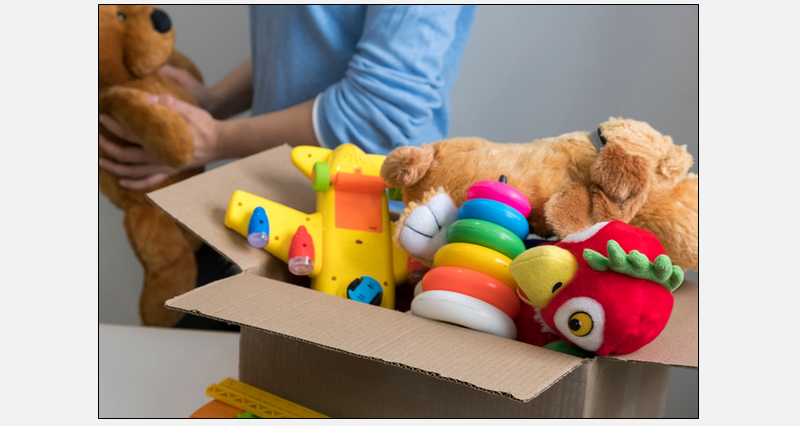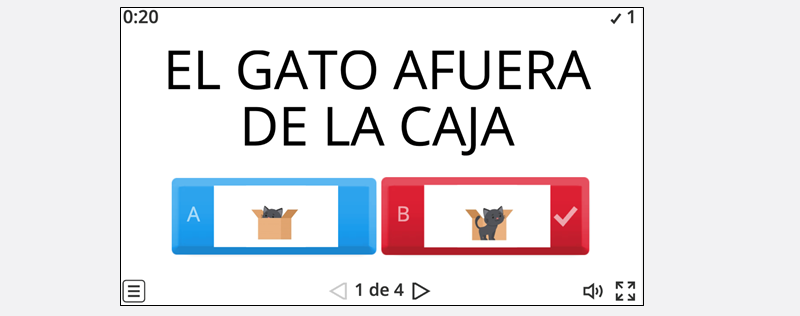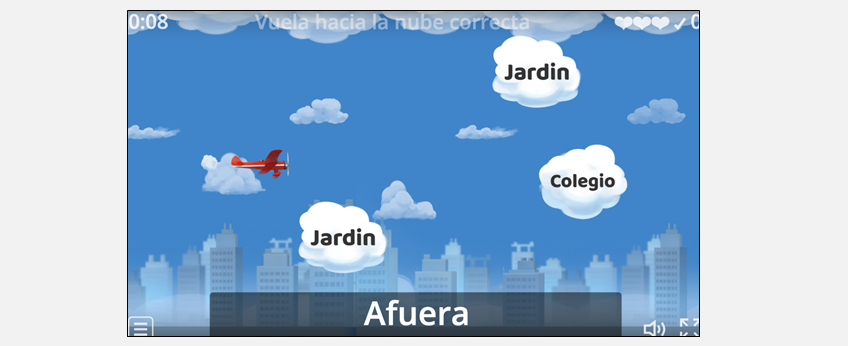Fuera/Afuera (Out/Outside)
WAYS WE CAN USE THE WORD
TO INSTRUCT e.g. Ponte el sombrero, fuera está soleado. (Put your hat on; it’s sunny out.)
TO PROTEST e.g. Fuera de aquí! (Get out!)
GET ATTENTION e.g. Estoy fuera. (I’m outside.)
EXPRESS OPINION e.g. Esta hermoso afuera hoy. (It’s beautiful outside today.)
For specific questions or more ideas regarding this core word Activity Sheet, please contact Sofia Ortiz-Blandon @ fortiz1@mail.sfsu.edu. Thank you!
Snack/mealtimes: With food containers demonstrate taking out food e.g. Ahora las galletas están adentro y ahora están afuera (Right now the cookies are inside, and now they’re outside).
Circle: Prior to circle time prepare to have a box with multiple items inside. Prompt the students to come and take the items outside of the box, e.g., Los juguetes están dentro de la caja y ahora están fuera (The toys are inside the box and now they are out).

Mr. Potato Head: Adults and students can play with the Mr. Potato Head. The adult can say to the students i.e. Ahora mismo el juguete está dentro y ahora lo vamos a sacar afuera (right now the toy is inside and now we’re going to take it outside).
Recess: Teachers can tell students i.e. ahora vamos a salir afuera (now we’re going to go outside).
Here are some suggested books on YouTube that can assist in teaching the core word:
- AUDIOLIBRO ¿Estás lista para jugar afuera? (An Elephant & Piggie Book, Spanish Edition)
- ¡FUERA, HOMBRE MOSCA! escrito por Tedd Arnold - Scholastic en español Read Aloud
With a sensory bin you can target the core word fuera by placing items inside the bin with the student. First, gather the child’s preferred toys or objects that can fit inside a sensory bin. Place all the items inside the box then begin the lesson. Ask the student to take out specific objects than ask them ¿está dentro o fuera? (is it inside or outside?).
Students can fill out this worksheet that targets the spatial math concepts fuera y dentro.

Párrafo de actividades adentro y afuera (paragraph of activities inside and outside): Students can use this worksheet to write a paragraph about the activities they do outside. This is a structured paragraph based on Step Up to Writing in Spanish with tracing support for activities done indoors and outdoor narrative writing.
Yo espio afuera activity: Encourage students to practice their describing skills in the target language with this fun I spy game! This can be used as a whole class starting activity or small groups for a fun way to practice speaking and listening skills.
Shadows have changing shapes activity: Outside on a sunny day create a shadow. Create a shadow with either your body or an object and ask the student i.e. ¿Qué necesitan para crear una sombra afuera? (what do we need to create a shadow outside?) The answer is light, an object and a place to cast the shadow.
Explore a landscape for its sounds. The World Sounds Project is a program created by Colin Hunter, a field phonograph who shares the sounds that characterize destinations worth experiencing at least once in a lifetime, such as Angkor Wat, Jerusalem or the African habitat of mountain gorillas. When you listen to their recordings, you will feel completely transported and without setting foot outside your home. Prompt your student by saying “Vamos a escuchar sonidos de todo el mundo que se pueden encontrar afuera.” (We are going to listen to sounds from around the world that can be found outside).

Students can play this game. The object of the game is to fly the plane into objects that are found outside or afuera.

Students can play this game that targets the words afuera and adentro.

You can find multiple games that target the core word afuera on the worldwall website that can be accessed through this link.

WORD WALL: Create a WordWall and add ‘afuera’ to the list.
READING and the Word Wall: Sound out the letters together. Have the students find the word on the AAC system.
WRITING and the Word Wall: Using a pencil or alternative pencil, have students try to type the word on the keyboard or write the word together.